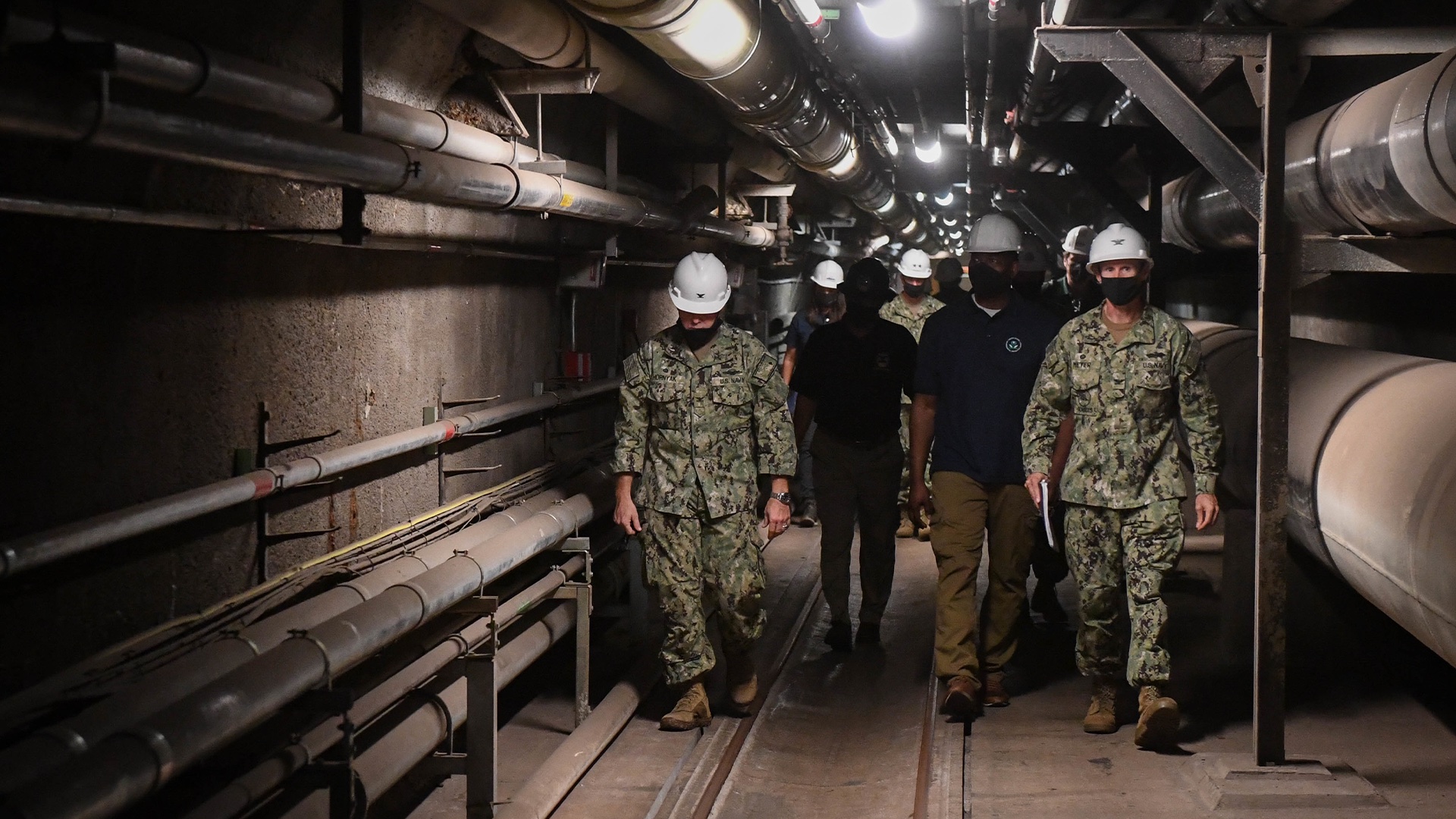

Military families and civilians have filed more than 1,000 new legal claims against the U.S. government this week tied to their exposure to contaminated drinking water by leaks at the Navy’s Red Hill Bulk Fuel Storage Facility in Hawaii in 2021.
According to attorneys representing those affected, 1,002 administrative claims were filed on Tuesday under the Federal Tort Claims Act seeking compensation for the fuel spill which ultimately exposed more than 93,000 people at Joint Base Pearl Harbor-Hickam, Hawaii to toxic chemicals. The Federal Tort Claims Act allows civilians who are hurt or injured due to government negligence to seek compensation.
If those claims are denied, the claimants will join an ongoing federal lawsuit filed in August 2022 on behalf of Patrick Feindt, the husband of Army Maj. Amanda Feindt whose family was one of many who experienced numerous symptoms ranging from seizures to gastrointestinal disorders, to burns, rashes, and lesions in the aftermath of the fuel spill.
“The Navy says they’ve taken responsibility for Red Hill, we want to give the Navy the opportunity to make it right,” said Kristina Baehr, one of the attorneys representing the families who were affected by the spill.
So far, all claims filed in relation to the Red Hill incident have been denied. With the Tuesday filing, though, there are now roughly 1,500 active claims, with more than 1,000 more expected to be filed before the two-year deadline for filing such claims expires in November. The larger lawsuit itself now includes 296 plaintiffs, according to Baehr.
Subscribe to Task & Purpose Today. Get the latest military news and culture in your inbox daily.
“Sixty-seven percent of our clients are still suffering symptoms,” said Baehr. “The Navy has accepted responsibility for the incident itself, but not for the long-term harm.”
The Red Hill facility was a massive, World War II-era underground fuel storage complex servicing Navy forces in the Pacific. A pair of 2021 incidents resulted in thousands of gallons of fuel leaking into the water used by tens of thousands of military families and civilians living in communities in the area.
On May 6, 2021, more than 20,000 gallons of fuel spilled during a transfer procedure, although the Navy initially estimated that only 1,618 gallons had leaked. Then, on November 20 there was another leak, with a Red Hill employee hitting a PVC pipe and sending thousands of gallons of liquid gushing out.
According to an internal investigation, the Navy at first speculated the leak could be water, and court documents from the Feindt lawsuit show that one civilian employee investigating the incident on November 21 “made a statement during the visit along the lines of ‘that must have been where the 20k gallons went.’”
But soon after, households began reporting chemical smells and an oily sheen in their water. On November 28, the base commander issued a statement claiming that there were “no immediate indications that the water is not safe,” although that was contradicted the next day by the Hawaii Department of Health saying that the water was no longer usable for cooking, drinking, or oral hygiene.
In town hall meetings, military families claimed that the Navy seemed to lack a sense of urgency in handling the crisis.
Indeed, as reported by Civil Beat, court documents show that on November 28, Navy officials in the office of Capt. Gordie Meyer, at the time the head of Naval Facilities Engineering Systems Command which operated Red Hill, reported smelling fuel from a nearby bathroom sink. While a decision-making flowchart in the Manual of Naval Preventive Medicine dictates that if there is evidence of an unknown contaminant in drinking water, a “Do Not Use” notice should be issued, it was not until December 2 that the Navy fully confirmed the presence of fuel in the water, having waited for test results to be confirmed.
“The Navy waited for days while thousands of people still thought the water was safe to use,” said Baehr.
In March of last year, Defense Secretary Lloyd Austin announced that the facility would begin a lengthy process of closing down the Red Hill facility. The process of removing all fuel in pipelines connecting Red Hill to Joint Base Pearl Harbor-Hickam was completed in November, although the overall decommissioning process is expected to take years.
The new claims also came just days before a federal judge was expected to rule on whether Adm. Samuel Paparo, commander of the U.S. Pacific Fleet since May 2021, should have to be deposed for the ongoing lawsuit, with the government having filed a motion to excuse him from such actions. Austin had recommended Paparo earlier this month to serve as the next Chief of Naval Operations.
The latest on Task & Purpose
- Is Ukraine winning the war against Russia?
- Air Force sends F-22s to Middle East to deter aggressive Russian pilots
- Army secretary concerned ‘woke military’ criticism could hurt the service
- Fort Sill commander fired amid investigation
- Fort Polk is renamed Fort Johnson